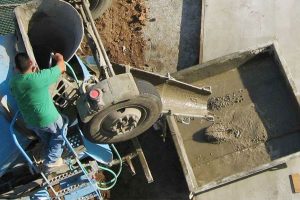THE infrastructure corruption scandal is expected to dampen sales of construction materials into early next year, the Cement Manufacturers Association of the Philippines, Inc. (CeMAP) said.
John Reinier H. Dizon, president of CeMAP, said sales have slowed since the corruption in flood control projects was called out by President Ferdinand R. Marcos, Jr. in July.
“Based on our estimates, the share of government projects or government cement consumption is anywhere from 30% to 40% of total cement demand,” he said.
“What we have witnessed since they unraveled this issue is that there’s been a bit of a slowdown, and the impact within that 40% is anywhere from a 5-10% reduction,” he added.
Next year, he said the government will want to resume spending on infrastructure.
“Maybe this sounds like a safe answer, but it’s a sincere answer. Right now it’s wait and see. But it’s a range. It can be, in the worst-case scenario, probably 5% in the first quarter next year,” he said.
“In the best case scenario, it’s flat. But I don’t think we can see any growth immediately by the first quarter because they’re still normalizing many positions,” he added, citing the need to fill up positions in the Department of Public Works and Highways.
The slowdown in sales resulted from the investigations ordered into government projects as well as the suspension of the issuance of Philippine Contractors Accreditation Board (PCAB) licenses, which are needed by contractors to take on projects.
“In our understanding, the former commissioners left or resigned. We’re not exactly sure of the status. I think one commissioner has been appointed, but I think they need three,” he said.
“That’s still unknown to us. It is crucial to reconstitute the PCAB because I understand the licenses are given every two to three years. They need to normalize that part,” he added.
He said CeMAP sees demand from the residential segment continuing to drive sales for the cement industry.
“Within the pie of total cement demand, approximately 40-50% is the residential market. We think that should be stable because of our demographics and housing demand. We have a 10 million housing unit shortage, so the demand for that area should still be stable,” he said.
“The government is still a big piece, about 30-40%, and then you have the commercial part. The malls, etc., and that is a function of confidence levels,” he added. — Justine Irish D. Tabile

